Q
What's the Specification of Honda City Hatchback's Tire?
The tire specifications and rim sizes vary among different models of the Honda City Hatchback. Specifically, the front and rear tires of the 1.5 S and 1.5 E models are both 185/60R15, paired with 15 - inch rims. For the 1.5 V, 1.5L RS, and RS e:HEV models, the front and rear tires are 185/55 R16, and they come with 16 - inch Berlina Black rims. These larger - sized rims can enhance the vehicle's sporty look.
The numbers and letters in the tire specifications have specific meanings. For example, "185" indicates that the tire width is 185mm. "60" or "55" represents the aspect ratio, which is the ratio of the tire's height to its width. "R" stands for the radial tire construction, and "15" or "16" refers to the wheel diameter in inches.
Special Disclaimer: This content is published by users and does not represent the views or position of PCauto.
Related Q&A
Q
What's the Reslae Value of Honda City Hatchback?
The resale value of the Honda City Hatchback is influenced by multiple factors, including the vehicle's age, condition, mileage, market demand, and configuration version. Generally speaking, Honda models have an above - average resale rate in the local market.
Take the City Hatchback launched in 2021 as an example. The new car price of the entry - level 1.5 S is about RM75,000. After three years of use, the second - hand price is approximately between RM55,000 and RM60,000 (depending on the vehicle's condition), which means it retains about 70% - 75% of its original value. If you choose the higher - spec V or RS versions, the residual value may be slightly higher, but it is also affected by mileage and maintenance records.
The Honda brand is quite popular in the Malaysian second - hand car market, especially the City series with a vehicle age of less than five years. Due to its fuel economy and reliability, there is a consistent demand for them. It is recommended that before selling your car, you ensure regular maintenance, keep a complete maintenance record, and refer to the recent transaction prices of the same model to get a more reasonable second - hand valuation. However, the actual price still depends on market fluctuations and the buyer's bargaining situation.
Q
What's the Engine Displacement of Honda City Hatchback?
The Honda City is available in both gasoline and gasoline hybrid (HEV, MHEV) versions. All models are equipped with an engine with a displacement of 1498cc, which is equivalent to 1.5 liters. This engine size strikes a balance between power and fuel efficiency, making it suitable for daily commuting and various driving needs.
The 1498cc gasoline engine can deliver a maximum power of 121 horsepower and a peak torque of 145 Nm. It is paired with a Continuously Variable Transmission (CVT) that enables smooth gear shifts.
In the gasoline hybrid RS e:HEV model, the 1498cc engine works together with an electric motor. The engine has a maximum power of 98 horsepower and a torque of 127 Nm, while the electric motor provides an additional 109 horsepower and 253 Nm of torque. The combined power output offers better acceleration performance.
Q
What Engine Is Equipped by Honda City Hatchback?
The two - door version of the Honda Fit offers different engine options. Some models are equipped with a 1.5 - liter naturally aspirated gasoline engine, with a naturally aspirated (NA) intake system. The engine has a displacement of 1,498 cc, generating a maximum power of 89 kW at 6,600 rpm and a peak torque of 145 Nm at 4,300 rpm, with a maximum horsepower of 121 hp. The vehicle is also equipped with a continuously variable transmission (CVT).
There is also the RS e:HEV model. It is equipped with a 1.5 - liter gasoline engine and a hybrid system. The engine itself can produce a maximum power of 72 kW at 5,600 - 6,400 rpm and a torque of 127 Nm at 4,500 - 5,000 rpm, with a maximum horsepower of 98 hp. The electric motor can provide a total power of 80 kW, a torque of 253 Nm, and a maximum horsepower of 109 hp. The battery type is a lithium - iron phosphate battery with a capacity of 1.3 kWh, and it uses an electronic continuously variable transmission (E - CVT). These engines strike a balance between performance and fuel economy to meet various driving needs.
Q
What's the Type of Honda City Hatchback's Gearbox?
The type of the Honda City's gearbox varies depending on the model and its powertrain. For gasoline-powered models, the transmission type is CVT (Continuously Variable Transmission), providing a smooth driving experience by continuously adjusting the gear ratio, which helps optimize fuel efficiency and power output according to different driving conditions.
For hybrid models like the Honda City RS e:HEV, it is equipped with an E-CVT (Electronically Controlled Continuously Variable Transmission). The E-CVT is specifically designed for hybrid vehicles. It coordinates the power output between the engine and the electric motor, allowing smooth switching between different driving modes such as pure electric drive, engine drive, and hybrid drive, thereby enhancing the overall efficiency and performance of the hybrid system.
Q
What's the PCD Size of Honda City Hatchback?
The PCD (Pitch Circle Diameter) of the Honda City Hatchback is 5x114.3, which means the wheel's bolt holes are arranged in a circle with a diameter of 114.3 mm and consist of 5 bolt holes. This specification is the same as that of the Honda Jazz, certain City Sedan variants, and some mainstream Japanese models in the Malaysian market (such as the Toyota Vios and Nissan Almera), providing ample options for wheel upgrades or replacements.
When changing wheels or tires, owners should not only consider the PCD but also ensure compatibility with the center bore (CB) size, offset, and tire specifications to maintain safety and handling stability. If upgrading to larger or more customized wheels, it is advisable to consult a professional tire shop or an authorized Honda service center to avoid purchasing unsuitable rims that could compromise driving safety.
Q
Does Honda City Hatchback Support Apple Carplay?
The Honda City is equipped with Apple CarPlay. The all-new 2024 Honda Fit hatchback has been launched in Malaysia. The vehicle features an 8-inch multimedia touchscreen on the center console, which supports wireless connection with Apple CarPlay and Android Auto, allowing users to connect their iPhones to the car's infotainment system. Once connected, drivers can directly access various functions of their iPhones, such as navigation, music playback, making calls, and sending text messages, through the car's touchscreen or voice control. By integrating the familiar iPhone interface with the vehicle system, it enhances the in-car experience. This is a very convenient feature for those who rely on their iPhones for various daily tasks and want to achieve seamless connectivity while driving.
Q
What's the Brand of Honda City Hatchback's Tire?
The factory-fitted Honda City Hatchback in the Malaysian market is primarily equipped with Yokohama's BluEarth-GT series tires (specifically 185/55 R16 or 185/60 R15, depending on the variant). These tires emphasize fuel efficiency, durability, and wet-road safety, aligning with the City Hatchback's positioning as an economical family car. However, depending on the production year or promotional packages, some vehicles may be equipped with tires of other brands such as Dunlop or Bridgestone. The exact tire model should be verified based on the factory configuration at the time of purchase.
For owners looking to replace their tires, other brands in the same specification—such as Michelin Energy XM2+ or Continental CC6—can be considered. These are popular energy-saving and comfort-oriented tire options in the Malaysian market, offering a balance between fuel efficiency and quiet performance. Regular checks on tire wear and pressure are recommended, along with adhering to the manufacturer's suggested replacement intervals to ensure driving safety.
Q
Is Honda City Hatchback a Good Car? Learn the Pros and Cons Here
The Honda City Hatchback has many advantages and is a great car. In terms of appearance, it features a delicate, stylish, and sporty design. For instance, some models are equipped with a honeycomb radiator grille and an added rear spoiler. The RS version also has unique trim panels and side skirts, making it highly recognizable. The interior details have been optimized. The RS version has an all - black interior. In some models, the instrument panel has been upgraded to a 4.2 - inch TFT color screen. The central control touch - screen host is 8 inches, and the pixels of the rear - view camera have been improved.
In terms of safety and intelligent assistance, the entire vehicle lineup comes standard with multiple safety systems, such as ABS anti - lock braking, vehicle stability control, lane departure warning, and autonomous emergency braking. There's also an ISO FIX child seat interface. Some models are equipped with the Honda Sensing function, providing comprehensive protection for the driver. Additionally, some models have added practical features like wireless CarPlay and a wireless charging panel.
In terms of power, there are multiple options. The 1.5L naturally aspirated engine paired with a CVT transmission offers a smooth power output, which is sufficient for daily driving. The hybrid system in the e:HEV RS model delivers excellent power and has relatively low fuel consumption. However, it also has some drawbacks. For example, the rear brakes of some models are drum brakes, which are slightly inferior to disc brakes in terms of braking performance. The rear - seat space may feel a bit cramped for taller passengers. Overall, the Honda City Hatchback performs well in terms of appearance, safety, and power, and can meet the daily needs of most users.
Q
What's the Width of Honda City Hatchback?
The Honda City has a width of 1,748 millimeters. This B-segment hatchback offers a comfortable interior space for passengers, and its width helps create a spacious cockpit, providing sufficient shoulder room for both front and rear passengers and enhancing the overall comfort during the drive. Whether it's a short trip around the city or a long-distance journey, this width ensures a more enjoyable driving and riding experience. Moreover, the vehicle's width also plays a certain role in its overall stability and handling on the road.
Q
What's the Road Tax of Honda City Hatchback? How to Calculate It?
The Honda City Hatchback provides petrol and hybrid versions, and the road tax calculation methods vary for different versions. For the petrol version, since its displacement is 1498cc, which is less than 1800cc, according to regulations, it is required to pay 75% excise duty. The specific amount of road tax needs to be comprehensively calculated in combination with the actual value of the vehicle and other factors. Generally speaking, the road tax price to be paid is calculated by multiplying the vehicle value by the 75% excise duty rate and then adding other possible tax items (such as the normal 10% sales tax, which has been waived during the current pandemic).
As for the hybrid version, currently all electric vehicles (including hybrids) registered in Malaysia are exempt from road tax. The tax - exemption period will expire at the end of 2025. Starting from January 1st, 2026, a new policy will be implemented. The road - use tax rate for electric vehicles will be divided into different levels according to engine power: for vehicles with an engine power below 100kW, for every additional 10kW of power, the tax increases by 10 ringgit; for vehicles with an engine power between 100kW and 210kW, for every additional 10kW of power, the tax increases by 20 ringgit; for electric vehicles with an engine power between 210kW (excluding 210kW) and 310kW, for every additional 10kW of power, the tax increases by 30 ringgit. Therefore, the road tax for the Honda City Hatchback hybrid version after 2026 needs to be calculated based on its specific engine power.
Latest Q&A
Q
When is the Release Date of BYD Dolphin?
The official launch date of the BYD Dolphin in Malaysia was July 20, 2023. This all - electric vehicle was introduced to the local market by BYD Malaysia. Positioned as a compact hatchback, it mainly targets urban commuting and offers high cost - effectiveness.
The Dolphin is equipped with a 44.9 kWh blade battery pack, offering a NEDC driving range of up to 427 kilometers. It also supports 60 kW fast charging, allowing it to charge from 30% to 80% in 30 minutes, which is very suitable for the daily use of Malaysian users. As a product of BYD's e - Platform 3.0, the Dolphin is equipped with an intelligent connected system and DiPilot driving assistance features, which can effectively enhance driving convenience in congested cities like Kuala Lumpur.
Malaysian consumers can choose from two configuration versions: Premium and Dynamic. The starting price is RM99,900, and it enjoys tax exemptions compared to fuel - powered vehicles in the same class. The launch of this vehicle has enriched the options in the Malaysian electric vehicle market. Its compact body and flexible handling are particularly suitable for the narrow local roads, and the safety of the blade battery also meets the needs of the tropical climate. Currently, test drives are available at BYD showrooms in places like Selangor.
With the Malaysian government's policy to promote the popularization of electric vehicles, high - cost - effective models like the Dolphin will become strong alternatives to traditional fuel - powered vehicles.
Q
What is the Length of BYD Dolphin?
The BYD Dolphin has a body length of 4,290 millimeters. This compact electric vehicle is well - suited for the urban driving environment in Malaysia due to its agile dimensions, especially excelling in congested roads and tight parking spaces. As a model built on BYD's e - Platform 3.0, despite its compact body, the Dolphin achieves excellent interior space utilization through its short front overhang design and a 2,700 - millimeter wheelbase. The knee room in the rear row can reach up to 130 millimeters, and the flat - floor design enhances seating comfort.
It's worth noting that this size is similar to that of the popular Honda City (4,313 millimeters) and Perodua Myvi (3,895 millimeters) in Malaysia. However, thanks to the electric - vehicle architecture, the Dolphin has a smaller proportion of mechanical space, providing a more spacious cabin within the same external dimensions.
Moreover, the 4,290 - millimeter body length, combined with the instant - torque characteristic of electric vehicles, allows the Dolphin to demonstrate flexible handling on winding mountain roads and in urban areas with frequent stops and starts in Malaysia. The standard - equipped reversing radar and rear - view camera system also relieve the pressure on novice drivers when parking in tight spaces.
This vehicle also specifically takes into account the needs of the tropical climate. The battery pack uses refrigerant direct - cooling technology to ensure stable performance in high temperatures, which is a practical design for Malaysian users.
Q
What is the Battery Size of BYD Dolphin?
As a pure-electric vehicle, the battery capacity of the BYD Dolphin varies depending on the version. The international version is usually equipped with a 44.9 kWh Lithium Iron Phosphate Blade Battery, offering a range of about 340 kilometers (NEDC standard). It is suitable for urban commuting and medium - and short - distance travel in Malaysia. It's worth mentioning that the Blade Battery is well - known for its high safety and long lifespan. With its unique structural design, it can effectively reduce the risk of thermal runaway, which is particularly important for users in Malaysia with its tropical climate.
In terms of charging, the Dolphin supports 60 kW DC fast charging. It can be charged from 30% to 80% in about 30 minutes, while it takes about 7 hours to fully charge with a 7 kW home AC slow charger. Users can choose flexibly according to the local charging facilities.
The Malaysian government is actively promoting the construction of electric vehicle infrastructure, including the addition of public charging piles and tax incentives. When purchasing an electric vehicle like the BYD Dolphin, buyers can enjoy exemptions from import duties and consumption taxes, which can reduce the long - term cost of vehicle use.
If you have higher requirements for the vehicle's range, you can keep an eye on the possible introduction of a large - battery version by BYD in the future, but you need to weigh the price against your actual needs. It is recommended to check the latest configuration on the official BYD Malaysia website or book a test drive to experience the real range performance before buying a car.
Q
What is the Service Price of BYD Dolphin? Better Look At Here First
The maintenance service prices of the BYD Dolphin in Malaysia vary depending on different service items and authorized service centers. It is recommended that car owners directly contact the official authorized service centers of BYD Malaysia to get the latest quotes to ensure the accuracy of the information. Generally speaking, the regular maintenance items of electric vehicles are relatively simpler than those of fuel vehicles, mainly including battery system inspection, brake system maintenance, and software updates. Therefore, the maintenance cost may be lower. For Malaysian car owners, choosing an electric vehicle not only allows them to enjoy lower daily usage costs but also helps to reduce carbon emissions, which is in line with the environmental protection trend. In addition, as a globally leading new - energy vehicle brand, BYD's Dolphin model is equipped with advanced blade battery technology, and it has a good reputation in terms of safety and range performance. It is recommended that car owners conduct regular maintenance to keep the vehicle in the best condition. At the same time, they can also pay attention to the promotional activities launched by BYD Malaysia officially, as sometimes free inspections or discount offers are available.
Q
What is the Mainentance Cost of BYD Dolphin? Get Idea Here
As a pure electric vehicle, the BYD Dolphin has relatively lower maintenance costs in Malaysia compared to traditional fuel - powered cars. This is mainly because electric vehicles have a simpler structure, which reduces routine maintenance items such as engine oil and transmission fluid changes. According to official recommendations, regular maintenance mainly includes battery system inspection, brake fluid replacement, air - conditioning filter renewal, etc. The cost of each maintenance is approximately between RM200 and RM400, depending on the pricing of the service center and the required items.
In addition, the battery life and health status of electric vehicles are the key points of maintenance. It is recommended to conduct professional inspections regularly to ensure performance. However, BYD provides a warranty for the battery for up to 8 years or 150,000 kilometers, which can significantly reduce potential costs during long - term use. For Malaysian users, electric vehicles can also save on fuel costs and road taxes, further reducing overall vehicle usage expenses.
It should be noted that although electric vehicles require less frequent maintenance, it is still recommended to follow the maintenance cycle specified by the manufacturer to ensure vehicle safety and range performance. Compared with other electric vehicles in the same class, the maintenance cost of the BYD Dolphin is at a moderate level, making it suitable for consumers who focus on economy.
View MoreRelated News
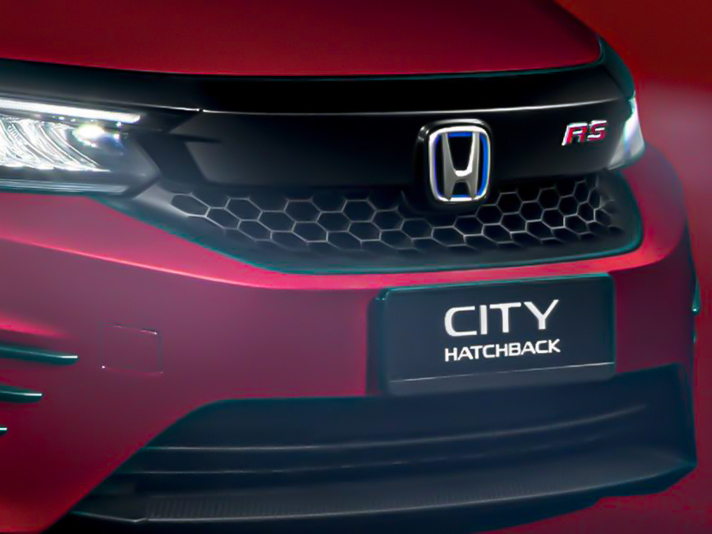
Is Honda City Hatchback Still Worth Buying in 2025?
JohnJun 26, 2025
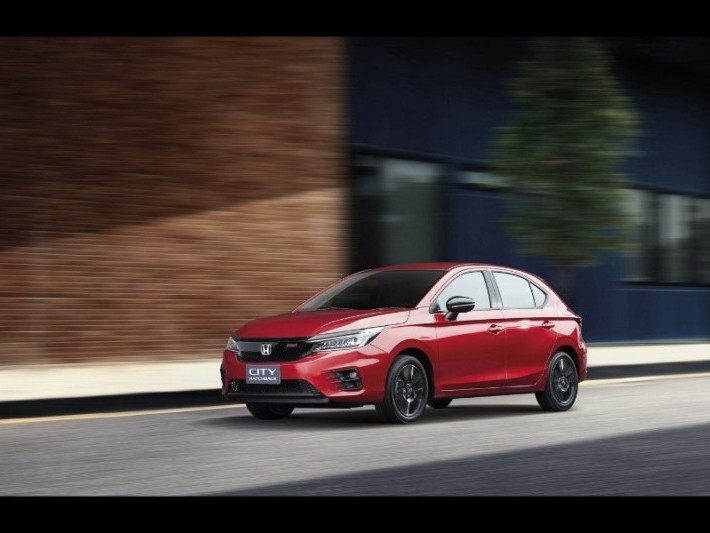
High Cost-Performance: Is the Honda City Hatchback Worth Buying? Dynamic Experience Revealed!
AshleySep 23, 2024
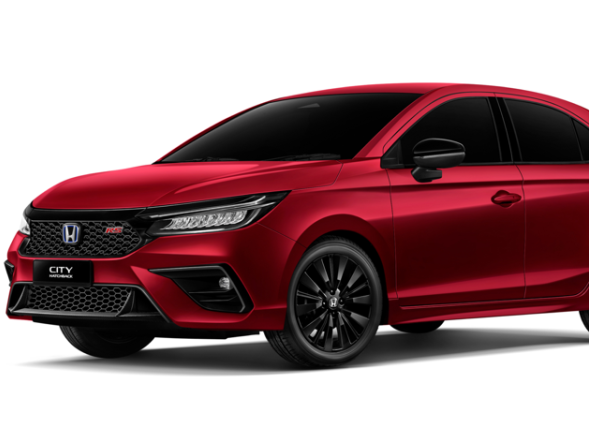
From Jazz to City Hatchback: The Perfect Transformation of Honda Hatchback
LienJun 4, 2024
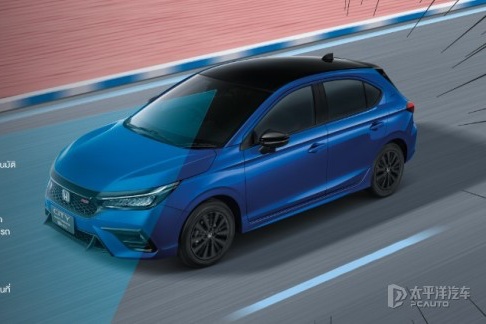
Honda City e HEV Hatchback RS: Fuel Efficiency
AshleyMay 4, 2024
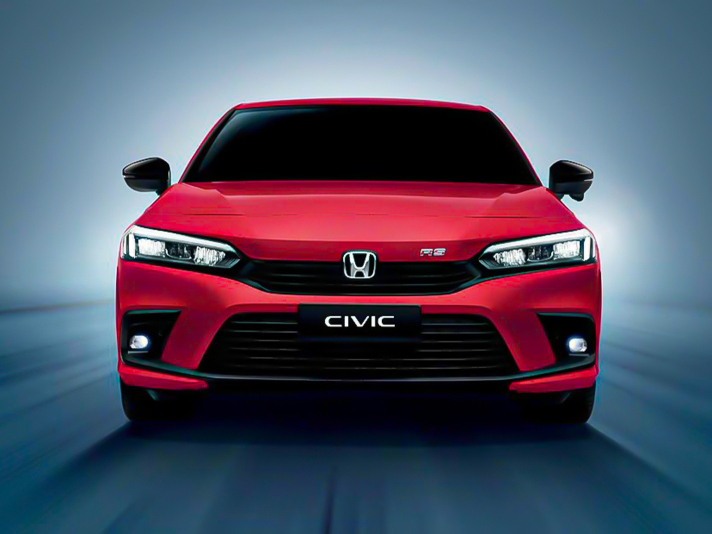
Honda Civic Interior Revealed: A Comprehensive Analysis of Civic’s Interior Charm
Kevin WongJul 10, 2025
View More












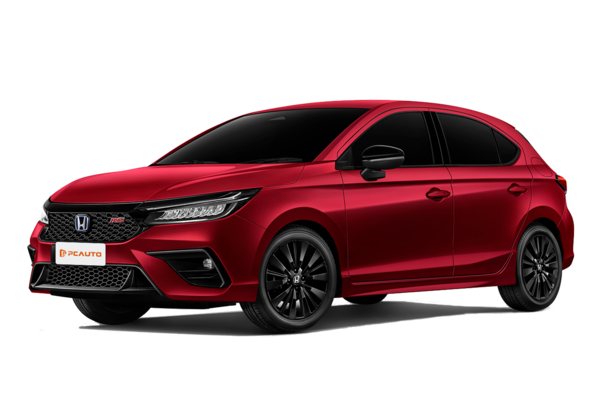
 Cars
Cars




Pros
Cons